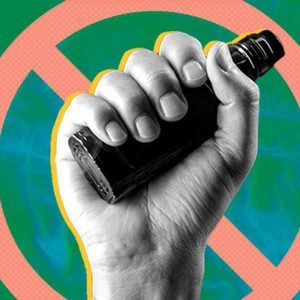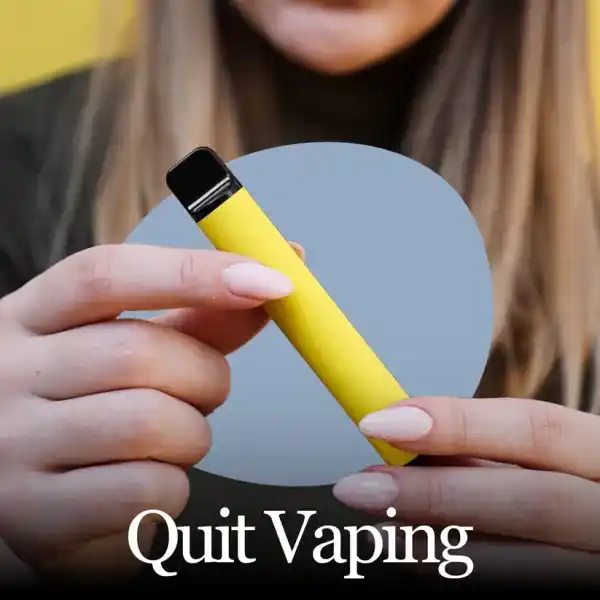How to quit vaping nicotine withdrawal reaction
Nowadays, the popularity of vape devices is highlighting a significant and disturbing rise in popularity worldwide, especially among the younger age groups.
If you are also struggling with quit vaping nicotine withdrawal reaction when quitting vaping, then this blog will give you tried and tested effective strategies to help you control your addiction, ease the discomfort, and ultimately quit e-cigarettes successfully. As well, learn about the timeline of smoking cessation, effective tips, and support associated with quitting smoking.
Facing the challenges of quit vaping
Deciding to quit vaping is a powerful step toward better health. But to be honest: this path often involves dealing with how to overcome the nicotine withdrawal reactions that come with quitting vaping. These symptoms are your body’s reaction to the absence of nicotine, the highly addictive substance contained in most e-cigarettes. Knowing what to expect and having a realistic plan to deal with these symptoms is crucial to your long-term success in quitting vaping.

Understanding: What are the symptoms of Quit Vaping?
- Nicotine is a powerful stimulant that profoundly alters your brain chemicals. By smoking e-cigarettes regularly, your brain becomes accustomed to a constant influx of nicotine, which increases neurotransmitters like dopamine — the “feel-good” chemical.
- When you quit vaping and nicotine levels plummet, your brain struggles to regain its natural balance. This temporary imbalance is the origin of withdrawal symptoms. To effectively deal with nicotine withdrawal symptoms when you quit vaping, you first need to recognize this biological process.
- It’s not just about willpower, it’s also about physiology. Symptoms usually peak in the first 1 to 3 days after you quit vaping , but can last for weeks, gradually subsiding as your body adjusts. Understanding this timeline will help you prepare.
Prepare to quit vaping
It’s important to prepare before quitting so that you’re aware of the possible cravings, emotions, and urges you might experience.
If you want to quit vaping, here some suggestion:
- Make a quit plan. Set your goals and create a plan to help you stay on track. A quit plan may include setting a quit date, understanding how much vaping is costing you, defining your triggers, and preparing ways to face nicotine withdrawal.
- Take steps to manage nicotine withdrawal. Getting support from friends, family, and experts can help you manage cravings and keep you accountable. You also may distract yourself when you get urges to vape by getting up and taking a walk or having a healthy snack instead. Getting all vaping devices out of your environment and not allowing others to smoke or vape in your home also helps. If you previously smoked cigarettes and switched to vapes to quit smoking, make a firm commitment not to return to cigarettes if you have nicotine cravings or other difficulties stopping vaping.
- Consider using nicotine replacement products. Nicotine patches, gum, or lozenges can help smokers quit by reducing nicotine cravings and withdrawal symptoms. They can also reduce nicotine withdrawal symptoms in vapers. Although the U.S. Food and Drug Administration (FDA) has not licensed these products specifically for the treatment of vaping , a recent Cochrane review showed evidence that they help reduce cravings and may make it easier for vapers to quit.
- Talk to a counselor. A cessation counselor can help you deal with urges and cravings to quit and deal with stressful situations. Counseling and medication may increase your chances of successfully quitting.

What are the best ways to quit vaping?
- Prescription Medications: Non-nicotine prescription medications like Chantix or Zyban can help reduce cravings and withdrawal symptoms. They work on brain chemistry related to nicotine addiction. These require a doctor’s prescription and discussion about potential side effects.
- Strategies for handling cravings:
◦ Delay: when a craving hits, tell yourself to wait 10 minutes. Usually, the strong urge will pass.
◦ Distraction: Immediately engage in an activity that keeps your hands and brain busy – take a short walk, drink cold water, chew gum, call a friend, play a game on your phone, etc.
◦ Deep Breathing: Practice slow, deep breathing (inhale for 4 seconds, hold breath for 4 seconds, exhale for 6 seconds) to calm the nervous system when cravings or anxiety increase.
◦ Avoid triggers: recognize and avoid situations, people, or places that are closely associated with vaping (e-cigarettes), especially in the first few weeks. - Building Your Support System: You Don’t Have to Quit vaping Alone
We all know it can be difficult to quit smoking alone. So you should take advantage of support:
1. Inform friends and family: Tell people who support you about your decision. Seek their encouragement and understanding, especially if you are upset.
2. Quit Line support: The Quit Line toll-free service can provide confidential guidance and support.
3. Online forums and communities: Talking to people who are going through the same difficulties of quitting can provide valuable understanding, advice and motivation. Look for more reputable online smoking cessation aid communities.
Quit vaping can help you:
- Avoid being addicted to nicotine.
- Save money spent on vapes.
- Protect yourself from any unknown long-term health risks of vaping, which are still uncertain.
Know that the discomfort of quit vaping is a sign that your body is healing. Stay the course, utilize the resources available, and know that a healthier, drug-free life is definitely within reach. You can do it !!
